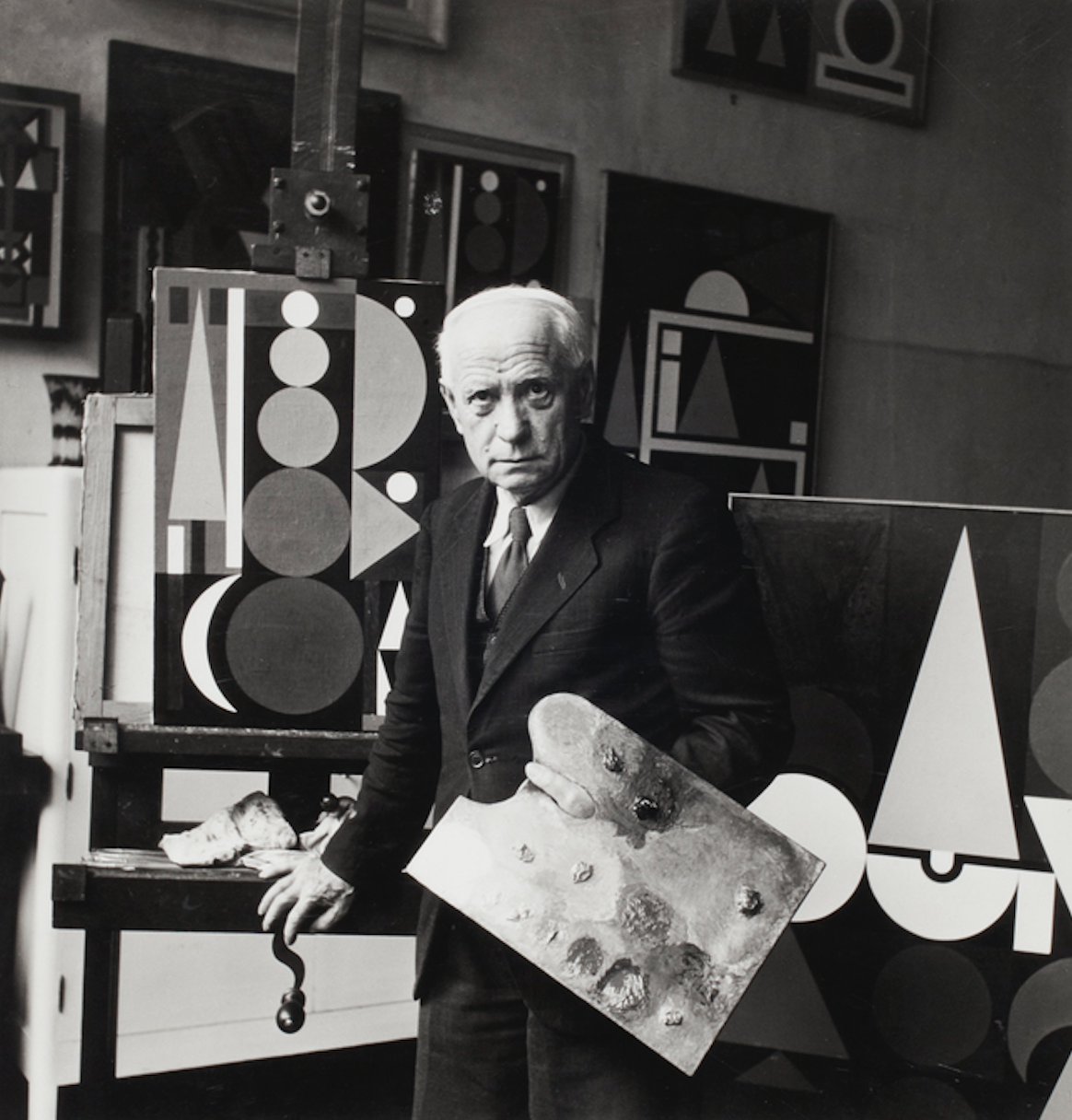Monday from 14am to 7pm
Tuesday to Friday from 11am to 7pm
Saturday from 2pm to 7pm
Alexis Lartigue Fine Art
32 Avenue Matignon 75008
Paris, France
Auguste Herbin

Auguste Herbin, born on April 29, 1882, in Quiévy and died on January 31, 1960, in Paris, was a French painter and theorist recognized as a precursor of abstract art. His artistic journey began at the Academy of Fine Arts in Lille, under the direction of Pharaon de Winter, where he studied from 1898 to 1901 before moving to Paris.
Herbin started his career by exhibiting post-impressionist works at the Salon des Indépendants in 1906. His encounter with Pablo Picasso and Georges Braque in 1909 marked a decisive turn towards cubism. Encouraged by the German art critic Wilhelm Uhde, Herbin participated in the Section d'Or exhibition in 1912. Between 1913 and 1923, he stayed in Céret and produced several cubist works, striving to eliminate traditional perspective from his compositions.
During World War I, he was assigned to camouflage work and the decoration of a military chapel. After the war, Herbin signed a contract with Léonce Rosenberg and regularly exhibited at the Galerie de L'Effort Moderne in Paris between 1918 and 1921. In 1919, he abandoned cubism to explore geometric relief forms, which he called "monumental objects," although these works were poorly received by critics.
In 1931, Herbin co-founded the group Abstraction-Création with Georges Vantongerloo and dedicated himself to a rigorous geometric painting style, composed of simple forms and pure colors. In the 1940s and 1950s, he developed his revolutionary concept of "plastic alphabet," a system associating 26 colors with geometric shapes and musical sounds. For example, the letter "i" corresponds to a circle, a triangle, the color orange, and the musical note D. His paintings, designed from words translated into this alphabet, combine structured aesthetics with musical synesthesia, offering a rich and unique sensory experience.
In 1946, Herbin published an essay on this plastic alphabet, consolidating his place as a major figure in abstract art. He became president of the Salon des Réalités Nouvelles and influenced many abstract artists of the next generation, including Jean Dewasne and Victor Vasarely. After suffering a stroke in 1953, he relearned to paint with his left hand, continuing his artistic exploration until his death. Herbin's international recognition was demonstrated by exhibitions of his works worldwide, including a series of original tapestries displayed in major artistic capitals. In 1956, he donated 24 works to the city of Le Cateau-Cambrésis, enriching the museum created by Henri Matisse. The Lahumière and Denise René galleries in Paris continue to regularly present his work, contributing to his rediscovery and the perpetuation of his artistic legacy.
The last major retrospective of his work took place in 2013 at the Matisse Museum in Le Cateau-Cambrésis and the Museum of Modern Art in Céret. In 2017, the Le Minotaure gallery in Paris presented an exhibition titled "Geometric Abstract Art: From Origins to Réalités Nouvelles," highlighting Herbin's importance in the history of abstraction in France. His contributions to abstract art continue to be celebrated and studied, confirming his place among the pioneers of this major artistic movement.